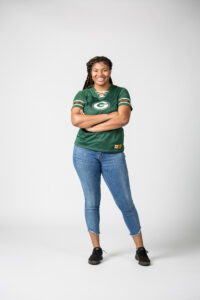
Tiffany Greene, a proud FAMU alumna and the first African American woman play by play commentator for a national TV network, delivers a simple message.
“Know your sports, know your stuff, because there will always be [men] trying to tell you, you don’t know what you’re talking about,” Greene said during a recent visit to her alma mater.
In an industry dominated by men, there have been numerous limitations placed on women as sports journalists. Allowing women to only be the host of shows instead of letting them use their voice to offer analysis and insight, has limited a female’s perspective on the airwaves.
Many men say, “Women don’t know what they’re talking about? Why would I listen to a woman give me insight about sports? If you didn’t play the sport, how can you school me on it?”
Everyday female sports journalists work tirelessly to prove that our work ethic, to show that we can answer these questions. Most men don’t see our potential to succeed in this industry.
Despite the limitations women face in the sports industry, many have faced sexism and gender inequality. According to a study in 2014, gender imbalances are present across print, broadcast and online platforms in sports journalism.
Statistics from 2012 showed that 90 percent of sports editors are white and 90 percent are male. The study also showed there was an increase in women of color among sports journalists, but there still weren’t enough female columnists and editors.
Diversifying sports newsrooms has been a challenge for years. However, the opportunities for women in sports have grown tremendously. There are more female sideline reporters working for major football networks than ever before.
Women are now following their passion to cover sports and the notion of them not being able to succeed has gone out the door. Progressing through a male dominated industry is not easy; many female sports reporters such as Pam Oliver, Maria Taylor, and Robin Roberts have paved the way for aspiring journalists like myself.
Understanding the great relevance of women in sports past, present and future has fueled my love for sports journalism.
Female sports reporters and journalists today are still continuously critiqued more on their looks than their knowledge of sports. Changing the dynamic of what women represent in the sports industry is an everlasting goal of all female sports journalists.
“The best thing that you can do to break down any of the barriers that women face in sports is to be over prepared –- know your value, but also know the subject matter that you’re covering,” Maria Taylor said.
Instead of working for sports networks, why don’t we as women create our own?